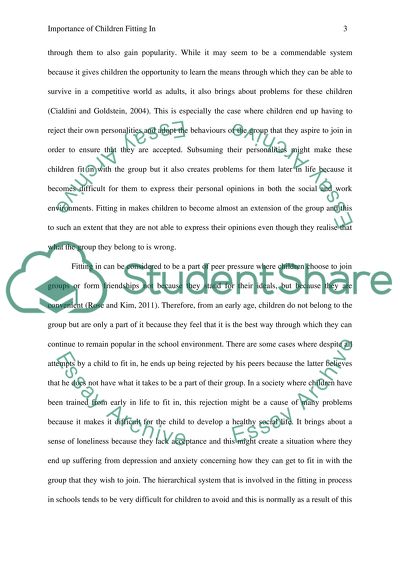Cite this document
(“Critically discuss whether it is important for children to feel that Essay”, n.d.)
Retrieved from https://studentshare.org/education/1676186-critically-discuss-whether-it-is-important-for-children-to-feel-that-they-aposfit-inapos-how-can-practitioners-support-the-development-of-a-sense-of-belonging
Retrieved from https://studentshare.org/education/1676186-critically-discuss-whether-it-is-important-for-children-to-feel-that-they-aposfit-inapos-how-can-practitioners-support-the-development-of-a-sense-of-belonging
(Critically Discuss Whether It Is Important for Children to Feel That Essay)
https://studentshare.org/education/1676186-critically-discuss-whether-it-is-important-for-children-to-feel-that-they-aposfit-inapos-how-can-practitioners-support-the-development-of-a-sense-of-belonging.
https://studentshare.org/education/1676186-critically-discuss-whether-it-is-important-for-children-to-feel-that-they-aposfit-inapos-how-can-practitioners-support-the-development-of-a-sense-of-belonging.
“Critically Discuss Whether It Is Important for Children to Feel That Essay”, n.d. https://studentshare.org/education/1676186-critically-discuss-whether-it-is-important-for-children-to-feel-that-they-aposfit-inapos-how-can-practitioners-support-the-development-of-a-sense-of-belonging.


